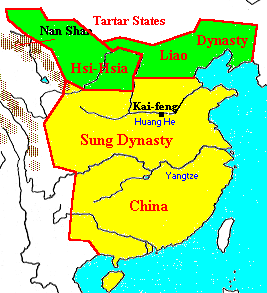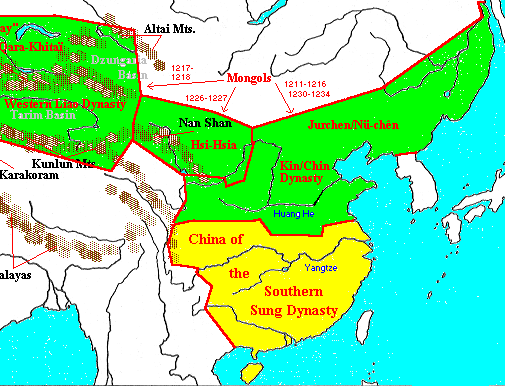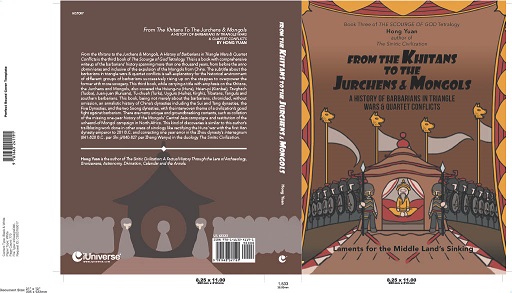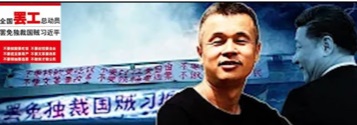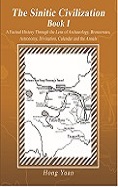
Sinitic Civilization-Book 1
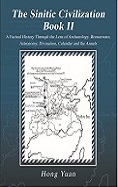
Sinitic Civilization-Book 2
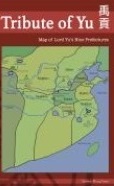
Tribute of Yu

Heavenly Questions
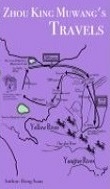
Zhou King Muwang's Travels
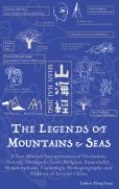
The Legends of Mountains & Seas
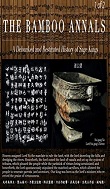
The Bamboo Annals - Book 1
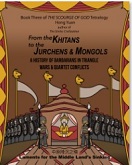
The Scourge-of-God-Tetralogy:
From the Khitans to the Jurchens & Mongols: A History of Barbarians in Triangle Wars and Quartet Conflicts
(available at iUniverse;
Google;
Amazon;
B&N)
|
|
XI (WESTERN) XIA DYNASTY
If you are coming here looking for the Xia dynasty, go to
www.imperialchina.org/Xia_Shang_Dynasties.html.
Note that the concept of 'west' for the Xia dynasty derived from the fact that the Tanguts built the Grand Xia dynasty along the Western Yellow River Bend, i.e., about the area where Helian Bobo's Huns launched the Hunnic Xia dynasty at the capital city of Tongwan-cheng (Jingbian, Shenxi).
There was no earlier concept of a 'west' or 'western' Xia entity or dynasty in China's history --other than a mythical 'Xi-xia' in fiction Mu-tian-zi Zhuan and the sophistry writings. The closest thing to link 'Xia' to the west would be the style names of nobles of the early Zhou dynasty.
The terminology of 'xi-xia' (i.e., Western Xia) or the denotation of 'xi-xia-shi' (i.e., the tribe or land of the Western Xia people) in Zhou King Muwang's travelogue, i.e., Mu-tian-zi Zhuan, could be related to the sophistry and fables of the late Warring States time period.
Similarly, the 'xi-xia' or western Xia state [that was conquered by {Tao-}tang-shi] in the SHI-JI [Historian Sima Qian's Annals] JIE [annotation] section for the book Yi [extant] Zhou Shu [Zhou Dynasty's history] was a latter-day fable talk --as seen in the ludicrous juxtaposition of numerous ancient human characters and place-naming, such as i) Yi-qu-shi for the Yiqu-rong barbarians and ii) Ban-quan-shi for the legendary Fiery Lord who were defeated at Banquan in the hands of the legendary Yellow Lord.
In contrast with the late 'xi-xia' (i.e., Western Xia) concept, there was an earlier terminology of 'dong-xia' (i.e., Eastern Xia) for the Dong-xia-zhou Prefecture that was designated by Western [Tuoba] Wei Dynasty Emperor Feidi in A.D. 554 for the locality of Yanzhou (Yan'an, Yenan).
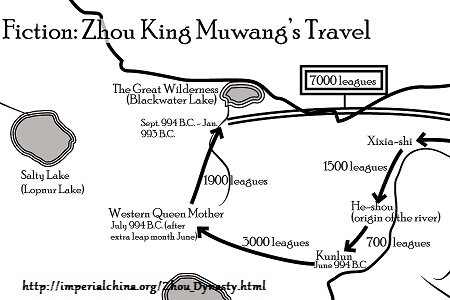 Though, 4-5000 years ago, Lord Yu tamed the Yellow River from the point of 'ji-shi', at the Northern Yellow River Bend, and not further than that or beyond that, not anywhere close to some sensational geologist' claim of a latter-day appropriated 'ji-shi' location in the Yellow River Nine Winding area, where a purported earthquake-induced dam first intercepted the water and then collapsed to cause the epic flood.
Tang Dynasty established the Jishi-jun [piled-up stones] military garrison district at Jingbian, Shenxi in commemoration of Lord Yu's feats.
You could say you heard about it right here.
This webmaster had settled on the 'ji-shi' location after correctly reading and analyzing the Chinese classics back and forth for twenty years.
Though, 4-5000 years ago, Lord Yu tamed the Yellow River from the point of 'ji-shi', at the Northern Yellow River Bend, and not further than that or beyond that, not anywhere close to some sensational geologist' claim of a latter-day appropriated 'ji-shi' location in the Yellow River Nine Winding area, where a purported earthquake-induced dam first intercepted the water and then collapsed to cause the epic flood.
Tang Dynasty established the Jishi-jun [piled-up stones] military garrison district at Jingbian, Shenxi in commemoration of Lord Yu's feats.
You could say you heard about it right here.
This webmaster had settled on the 'ji-shi' location after correctly reading and analyzing the Chinese classics back and forth for twenty years.
The Xi-xia (Western Xia) Dynasty, lasting hundreds of years, was the exception in the Chinese history chronicles, namely, there was no separate volume for this dynasty. At most, it was treated as a section in the books such as History of the Soong Dynasty, History of the [Khitan] Liao Dynasty, History of the [Jurchen] Jin (Gold) Dynasty, and History of the [Mongol] Yuan Dynasty. However, the Chinese history recorded that Western Xia was able to retain the Tang China's court music and the Confucian classics while the Northern China's Five Dynasties failed to inherit the Tang legacy.
|
|
|
|
|
|
|
Sovereigns & Thearchs;
Xia-Shang-Zhou dynasties;
Zhou dynasty's vassalage lords;
Lu Principality lords;
Han dynasty's reign years
(Sexagenary year conversion table-2698B.C.-A.D.2018; 247B.C.-A.D.85)
|
|
The Sinitic Civilization - Book I is
available now at
iUniverse,
Barnes & Noble,
Amazon,
Google Play|Books
and
Nook.
The Sinitic Civilization - Book II is available at
iUniverse,
Amazon and Barnes & Noble.
Check out the 2nd edition preface that had an overview of the epact adjustment of the quarter remainder calendars of the Qin and Han dynasties, and the 3rd edition introductory that had an overview of Sinitic China's divinatory history of 8000 years.
The 2nd edition, which realigned the Han dynasty's reign years strictly observing the Zhuanxu-li calendar of October of a prior lunar year to September of the following lunar year, also cleared this webmaster's blind spot on the authenticity of the Qinghua University's Xi Nian bamboo slips as far as Zhou King Xiewang's 21 years of co-existence with Zhou King Pingwang was concerned, a handicap due to sticking to Wang Guowei's Gu Ben Bamboo Annals and ignoring the records in Kong Yingda's Zheng Yi.
Stayed tuned for Book III that is to cover the years of A.D. 86-1279, i.e., the Mongol conquest of China, that caused a loss of 80% of China's population and broke the Sinitic nation's spine.
Preview of annalistic histories of the Sui and Tang dynasties, the
Five Dynasties, and the two Soong dynasties
could be seen in
From the Khitans to the Jurchens & Mongols: A History of Barbarians in Triangle Wars and Quartet Conflicts
(The Barbarians' Tetralogy - Book III: available at iUniverse;
Google;
Amazon;
B&N).
(A final update of the civilization series, that is scheduled for October 2022, would put back the table of the Lu Principality ruling lords' reign years, that was inadvertently dropped from Book I during the 2nd update.)
|
|
Book II - Table of Contents:
Section Seven: The Han Dynasty
Relationship with the Huns 392
Chapter XXXIII: The Hunnic Empire 409
Origin of the Huns 409
The Rong & Di Barbarians in the Context of Relation to the Fiery Thearch, the San-miao Exiles and the last Xia Dynasty King 413
The Zhou, Qin and Jinn's Zigzag Wars with the Barbarians & the Construction of the Great Walls 417
Mote's Hun Empire, the Yuezhi People, and the Early Han Dynasty 424
The Huns & the Eastern Hu Barbarians 430
The Hunnic Government Structure & the Dragon Reverence 431
Chapter XXXIV: The Han Dynasty's Wars with the Huns 435
Chapter XXXVI: The Western Expedition, The Kunlun Mountain & Shan Hai Jing 489
Han Emperor Wudi Seeking Elixir from the Immortals on the Kunlun Mountain 491
Credible Geography Book on the Mountains Possibly Expanded to Include the Legendary Kunlun Mountain 493
Unearthly Things in the Mountains' Component of The Legends of Mountains & Seas 501
The Divination Nature and Age of the Seas' Component of The Legends of Mountains & Seas 506
Chapter XXXVII: Shan Hai Jing & The Ancient Divination 520
Chapter XL: The Latter Han Dynasty's Chronological History 560
The Relation with the Southern Huns 561
|
|

It would be during the Manchu Qing Dynasty that scholars began to compile records about the Tangut's Western Xia Dynasty, among whom would be Zhang Jian, Wu Guangcheng, Zhou Chun and Chen Kun. In the early years of the Republic of China, scholar Dai Xizhang compiled a book entitled Xi Xia Ji (i.e., Records of Western Xia).
Scholar Luo Zhenyue, one of the four renowned oracle bone experts, while staying in Japan, had published a Tangut language dictionary Yin Tong (i.e., "Pronunciation Same"), and his sons Lu Fucheng and Luo Fuchang continued his father's workings from 1916 onward.
In 1933, scholar Wang Jingru published three volumes of "Western Xia Research" and received an award from French Academie des sciences.
The junior son of Luo Zhenyue, i.e., Luo Fuyi, continued the research in the 1970s after communist premier Zhou Enlai purportedly intervened during the turmoil years of the Cultural Revolution.
In 1980, Professor Wu Tianxi published Xi-xia Shi Gao (i.e., Writings on the History of the Western Xia Dynasty).
The Russians, Americans, Japanese, Hungarians, New Zealanders, French, British and Germans certainly had abnormally strong interests in the dead people and language, and contributed significantly to the discovery of the Tangut history and language.
Origins Of the Tanguts
Out of the Qiangic people would evolve the later Xi-xia Kingdom led by the Dangxiang nomads or the Tanguts.
The Dangxiang people, i.e., the Tanguts, were remnants of the Western Qiang people. The Dangxiang people would be living to the south of the Tuyuhun people. This dwelling place of the Dangxiang people and the Tuyuhun people would be called the Inner Tibet [against the Frontal Tibet or Outer Tibet] in the later times.
By the time of the South-North Dynasties, the Dangxiang-qiang dwelled around Huanghe-qu [the Yellow River winding, i.e., Xizhi in Yu Gong or Cizhi in Hou Han Shu], i.e., today's Qinghai Province.
This land would be the gateway between Sinitic China and the Sichuan basin.
During Qin Lord Li4-gong's reign (?-443 B.C.), the Qin army campaigned westward against the Qiangs around the Yellow River Nine Winding area. Wuyi [slave] Yuanjian [chieftain], who escaped from the Qin captivity, later led his clansmen in a relocation to the Xizhi-he River area, in today's Tibet-Qinghai borderline, to become the Tibetan ancestors.
Half a century later, Qin lord Xian'gong turned west to attack the Yuan-rong barbarians at the upperstream Weishui-River, driving Shu-fu-mao's tribe towards the Xizhi-he River area, near Tibet.
(The Yuan-rong barbarians carried the name of an ancient river called by Yuan-shui, that was noted as the He-yi barbarians in Yu Gong.
This was a river that was noted in history to be near the legendary Mt. Bozhong-shan and the bird-rat-same-cave [i.e., bat cave] mountain, with the He-yi barbarians travelling along the Yuan-shui River {Xiqing ying Yuan(Huan) er lai}, then floated on the Qian-shui River {fu yu Qian}, then cross-hopped into the Mian-shui River {yu yu Mian}, then entered the Wei-shui River {ru yu Wei}, and finally sailed in the Yellow River {luan yu He} --something that the scholars of the past thousand years scratched their heads to find a linkage among the waterways, something more like a midland relay that was omitted in Yu Gong.)
The Dangxiang-qiang people spread from Lintao [Lintan of today's Gansu Province] and Xiping [Xining of Qinghai] in the east to Yehu [the Shanshan and Turfan counties in the New Dominion Province] in the west.
The Dangxiang-qiang legends claimed that they originated from Bai-he [white river, i.e., the ancient Bailongjiang or Qiang-shui] and the cross-border areas of today's Qinghai-Gansu-Sichuan provinces. Their epics also inferred to their tradition of pasting the red color onto their dark faces, building the stone citadels, pointing to the ancient Gao-yao-mi statelet as their origin, and eulogizing a Tibetan girl as the wife of their ancestor.
Seng Ren interpreted the Dangxiang-qiang legends by applying the Gao-yao-mi statelet as that belonging to the son born by the leader of seven Dangxiang-qiang brothers and the Tibetan girl. Seng Ren claimed that the seven brothers, together with the Gao-yao-mi statelet, would comprise the eight clans of Tuoba-shi, Feiting-shi, Wangli-shi, Pochao-shi, Yeli-shi, Miqin-shi, Xifeng-shi and Mozang-shi.
History recorded that there evolved eight Dangxiang tribes of the Qiangic nature by the time of the Five Dynasties (AD 907-960), with one tribal group carrying the old Tuoba name.
By the Sui Dynasty, about A.D. 584, several thousand households of the Dangxiang-qiang sought suzerainty with the Chinese. In A.D. 585, Tuoba Ningcong led his tribe to Xu-zhou (Lintan of today's Gansu Province).
However, in A.D. 596, they attacked Huizhou [the Maowen Qiang Autonomous County of today's Sichuan Province] prefecture of Sui Dynasty, and later sought suzerainty with the Chinese again after a defeat.
In A.D. 629, Dangxiang-qiang leader Xifeng Bulai relocated to Guizhou (the A'bei prefecture and Songpan county of today's Sichuan Province] and received the Tang Dynasty's conferral as "ci-shi" (satrap or governor) for the Guizhou Prefecture.
Other clans came to Tang, too.
Tang Dynasty zoned the prefectures of Zhiju-zhou, Feng-zhou, Yan-zhou and Yuan-zhou in today's Sichuan Province for settling the Qiangs.
The Tuoba Tribe of the Dangxiang people had inter-marriage with the Tuyuhun people (i.e., the Murong Xianbei clan), and at one time made an alliance against the Tang army.
In A.D. 634, Tuoba Chici assisted Tuyuhun King Youyun in fighting Tang at the Langdaoxia valley. After a defeat, Tuoba Chici and his nephew Tuoba Sitou sought suzerainty with the Chinese, and he was conferred the royal family name of 'Li' and assigned the territories of Xirong-zhou, i.e., to the northwest of the ancient Songzhou prefecture and at the cross-border area of today's Qinghai-Gansu-Sichuan Provinces. Tuoba Chici ruled the 32 so-called 'jimi-zhou', i.e., chained and harnessed prefectures, and reported to the Tang Dynasty's Songzhou governor office.
Tangut minister, Luo Shichang, stated that the To'pa (Tuoba) people who stayed in the ancient Songzhou Prefecture [Songpan in today's Sichuan border area] had adopted their old name of Tuoba. When the Dangxiang relocated to the Yinzhou and Xiazhou territories [Jingbian & Mizhi of today's Shenxi Province], around the West Yellow River Bend, they renamed themselves to the 'Ping-xia [flatland Xia] Tribe'.
From A.D. 635 to 678, the Tibetans kept on assaulting the Qiangs. In 635, the Tibetans defeated the Qiangs in the Dangxiang and Bailan area. By A.D. 678, the Qiangs lost the territories of Yangdong to the Tibetans.
Tang Emperor Xuanzong (reign 712-756) allowed 25 Qiangic prefectures of the Qiang people to relocate to Qingzhou (Qingyang of today's Gansu Province).
Tuoba Sidai (speculated to be Tuoba Sitou) received the conferral from Tang Emperor Xuanzong.
The Tibetans termed the stranded Qiangs in the original habitation area as 'Miyao' and later applied the term to all Qiangs and consecutively the Tanguts.
After the An-Shi Rebellion of the late Tang Dynasty, the Tibetans occupied over a dozen prefectures in He-xi [west of the Yellow River] and Long-you [the rightside or western Gansu Province as well as the Western Territories [i.e., the New Dominion Province] by taking advantage of the vacuum left by the Tang army's departure.
Tuoba Shouji, i.e., son of Tuoba Sitou, received Tang Emperor Xuanzong's conferral as Duke Xiping-gong, and later the post of "ci-shi" (satrap or inspector) for Rongzhou and consecutively "du" (governor) of Lingzhou for the contribution to quelling the An Lushan-Shi Siming Rebellion.
By the time of Tang Emperor Daizong (reign 760-779), Dangxiang-qiang in the Lingzhou & Qingzhou areas colluded with the Tibetans in harassing the Tang border area. General Guo Ziyi petitioned to have the Dangxiang-qiang relocate to Yinzhou (Yulin of Shenxi Province) and Xiazhou (Baichengzi of Inner Mongolia). The Dangxiang-qiang also moved to Suizhou (Suide of Shenxi) & Yanzhou (Yan'an of Shenxi).
Five Qiangic chieftains (i.e., "ci-shi"), such as Tuoba Chaoguang and Tuoba Qimei, went to see the Tang emperor in Chang'an.
The 'Ping-xia Tribe' would be the Tuoba Chaoguang clan that took the name from 'ping' or the leveled desert surface between the Xiazhou and Yinzhou prefectures.
Seng Ren claimed that some Qiangs had herded to Lishi of Shanxi in A.D. 765 but later crossed the Yellow River back to the west.
Tuoba Sigong, a Dangxiang nomad with a Tuoba clan name, was from the 'Ping-xia Tribe' around the West Yellow River Bend.
He was the grandson of Tuoba Qianhui, while Tuoba Qianhui was the grandson of Tuoba Shouji. While Tuoba Qianhui was conferred the post of "ci-shi" for the You-zhou prefecture, Toba Sigong assumed the post by himself.
The eruption of the Huang Chao Rebellion (874-884) would mark the rise of the Tuoba clan.
Toba Sigong had come to the aid of Tang Dynasty in A.D. 881 when rebel Huang Chao sacked Xi'an the Tang capital in A.D. 880. Tang Emperor Xizong conferred Toba Sigong the title of Duke Xia-guo-gong [lord of the Xia statelet], 'jie-du-si' (satrap) of the prefectures of Xia-Sui-Yin-You [Xiazhou=Jingbian-xian; Suizhou=Suide; Yinzhou=Mizhi-xian; Youzhou=Jingbian-xian], and the Tang family name of Li.
The Tuoba Sigong brothers continued to enjoy the Tang conferrals.
The Tangut Language
The Tanguts devised an indigenous ideogrammatic script in A.D. 1036 and developed a literary tradition of translating Buddhist texts and original secular works.
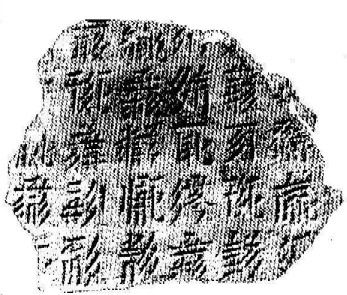 Seng Ren, in The Western Xia Kingdom & the Pyramids of Orient, claimed that the Mongols continued to allow and encourage the usage of Tangut characters (termed the 'He-xi' characters) throughout the 13th & 14th centuries, and that the Tangut script Buddhism books were carried over to Japan in the same timeframe.
In A.D. 1342, at the Juyongguan Pass, to the northwest of Peking, Yuan Emperor Shundi ordered to erect a six-languages monument, with one Tangut Na-lin [literati] participating in the project.
In A.D. 1372 of Ming Emperor Hongwu's Era, a Tangut-scripted Buddhist article and drawing was authored.
The Tangut characters were still in use during Ming Emperor Hongzhi's Era (A.D. 1488-1505).
Two Tangut script pagodas dating from A.D.1502 were discovered in the Hanzhuang area of the Baoding city of Hebei Province in 1962.
Historian Chen Yinke discovered, in a Tibetan script scroll from a German library, the Tangut scripts dating from Ming's Wanli Era [A.D. 1573-1620] in 1931.
Later, in A.D. 1810, Zhang Shu opened up a monument wall inside of the Dayun-shi Monastery in Wuwei and discovered a 2.5x0.9 meter size monument with the Tangut-Chinese inscription dating from Tangut Emperor Chongzong [Li Qianshu]'s Tianyou Era.
In 1917, some Tangut Buddhism manuscripts were discovered in the Lingwu County.
In 1952 & 1972, at Wuwei of Gansu Province, the Tangut scripts were again discovered, while the Tangut royal tombs [which were ransacked by the Mongols] were excavated on the outskirts of Yinchuan in the same time.
Seng Ren, in The Western Xia Kingdom & the Pyramids of Orient, claimed that the Mongols continued to allow and encourage the usage of Tangut characters (termed the 'He-xi' characters) throughout the 13th & 14th centuries, and that the Tangut script Buddhism books were carried over to Japan in the same timeframe.
In A.D. 1342, at the Juyongguan Pass, to the northwest of Peking, Yuan Emperor Shundi ordered to erect a six-languages monument, with one Tangut Na-lin [literati] participating in the project.
In A.D. 1372 of Ming Emperor Hongwu's Era, a Tangut-scripted Buddhist article and drawing was authored.
The Tangut characters were still in use during Ming Emperor Hongzhi's Era (A.D. 1488-1505).
Two Tangut script pagodas dating from A.D.1502 were discovered in the Hanzhuang area of the Baoding city of Hebei Province in 1962.
Historian Chen Yinke discovered, in a Tibetan script scroll from a German library, the Tangut scripts dating from Ming's Wanli Era [A.D. 1573-1620] in 1931.
Later, in A.D. 1810, Zhang Shu opened up a monument wall inside of the Dayun-shi Monastery in Wuwei and discovered a 2.5x0.9 meter size monument with the Tangut-Chinese inscription dating from Tangut Emperor Chongzong [Li Qianshu]'s Tianyou Era.
In 1917, some Tangut Buddhism manuscripts were discovered in the Lingwu County.
In 1952 & 1972, at Wuwei of Gansu Province, the Tangut scripts were again discovered, while the Tangut royal tombs [which were ransacked by the Mongols] were excavated on the outskirts of Yinchuan in the same time.
The Tangut language, i.e., the dead Tibeto-Burman language of the Buddhist empire of Xi-xia, received its popularity after the intrusion and exploration by the Russian, British Hungarian and French archaeologists.
In A.D. 1882, Frenchman Devieria rebutted British A Wylia's A.D. 1870 comment in regards to the six-languages monument at the Juyongguan Pass, speculating that it could be the dead Tangut language.
British E.C. Baber claimed that the Tanguts could be the same as Mi-yao-ren in today's Qinghai Province.
Britishman T.W. Bushell ascertained forty Tangut characters on basis of the Tang-gu-te [i.e., Tangut] coins on a British Royal Society magazine in the A.D. 1890s.
Devieria, after studying Zhang Shu's discovery, ascertained his viewpoint in A.D. 1898.
In A.D. 1899, Frenchman M.G. Morisse found a Tangut script with Chinese interpretation in Peking and paraphrased about 100 Tangut characters.
In May of 1908, an expedition of the Imperial Russian Geographical Society, led by Peter Kuzmitsch Kozlov, discovered a library of the Tangut manuscripts hidden inside a stupa amongst the ruins to the west of a lost Tangut city at Khara Khoto [Black Water] in Inner Mongolia.
Kozlov, who was researching botany in Sichuan, was asked to go north to Khara Khoto (i.e., today's Heicheng [black city] or Heishui-cheng [the black water city under the E-ji-na Mongolian Banner that was sandwiched between the Jiayuguan Pass of Gansu Province to the southwest and the Gobi-Altai Mountain of Outer Mongolia to the north] for detecting the treasures buried by the Tangut legendary 'Black' [black faced] general.
Khara Khoto was where the Tanguts stationed one of twelve columns of armies, which was the 'da-ze' [big lake] location, i.e., the outer limit of Sinitic China, where Zhou King Muwang travelled westernmost.
The Mongols, after exterminating the Tangut Xia dynasty, established the 'Yi-ji-nai' [mutation of E-ji-na, i.e., the black water] garrison here. Seng Ren speculated that the E-ji-na River ran dry after the Ming dynasty heavily utilized the water resource around the He-xi Corridor for agriculture. At one time during the Tang dynasty, Lake Juyan, where the E-ji-na River flew to, possessed 300 square kilometers in size.
Kozlov, after shipping over some treasures to St. Petersburg in March, left for the Sichuan Province again. Kozlov revisited Khara Khoto in May and located some manuscripts hidden inside a stupa on the rightside bank of a dry bed river, i.e., the ancient E-ji-na River.
The British and the Americans followed Kozlov's path thereafter.
In 1914, A. Stein came to Khara Khoto and scavenged the remaining manuscripts that were discerned to be written in Tibetan, Tangut, Turkic, Chinese and Uygur scripts.
In 1914, the Luo Fucheng & Luo Fuchang brothers obtained from Russian [Yi-feng-ge, namely, a Soviet spy who converted Li Dazhao to communism] a Tangut dictionary (i.e., "The Pearls In A Palm") authored by Gu-le-mao-cai back in A.D. 1190.
Luo Zhenyue interpreted another batch of the Tangut dictionaries entitled "Pronunciation Same" and "Literature Sea" on basis of the Russian excavation.
In 1916, American B. Laufer claimed that the Tangut language belonged to the same branch as the Yi-zu & Naxi-zu minority people in southwestern Yunnan Province.
One dozen years later, an American, by the name of Warner, discovered a few wall drawings, three potteries and a few dozens of coins.
In 1931, British S.N. Wolfenden and American G.T. Bowles claimed that the people in the Muya area could be descendants of the Tanguts who were exiled and relocated there by the Mongols.
Throughout the 20th century, the Chinese, Russians, Americans, Japanese, Hungarians, New Zealanders, French, British and Germans had conducted tenuous research into the Tangut language. The Russians, with firsthand evidence, had produced the most scholars, among whom some suffered death in Stalin's Great Purge of the 1930s.
The Tanguts vs Five Dynasties
During the Five Dynasties time period, the Tuoba-Li family expressed loyalty to all five succeeding courts as well as the Northern Han Dynasty to the east of the Yellow River. Only Posterior Tang had launched one campaign against Tuoba-Li's Tangut regime.
In A.D. 895, Toba Sigong (i.e., Li Sigong) passed away. Brother Li Sijian assumed the post of "Dingnan-jun jiedu-shi" (i.e., Governor-general for Quelling-turmoil Garrison). When Posterior Liang was founded by Zhu Wen, Li Sijian expressed loyalty and received extra titles of "jian-jiao tai-wei' [monitoring captain] and "shi-zhong" [imperial attaché].
In 908, Li Sigong's grandson, Li Yichang, took over Li Sijian's post. Three months later, Li Yichang was killed by his general Gao Zongyi. An uncle, by the name of Li Renfu, was supported as the new Governor-general for Quelling-turmoil Garrison.
At one time, Li Renfu was attacked by Li Cunxu (i.e., King Jinn-wang) who encircled the Xiazhou city.
Posterior Liang Emperor Taizu (i.e., Zhu Wen) came to the relief of Li Renfu.
After Li Cunxu overthrew Posterior Liang, Li Renfu expressed loyalty to Posterior Tang.
In A.D. 933, son Li Yichao assumed the post of Li Renfu.
Posterior Tang Emperor Mingzong [Li Siyuan or Li Dan, reign 926-933] had campaigned against Li Yichao for his refusal to relocate to Yanzhou.
Tang Emperor Mingzong intended to swap his general An Congjing ('Yanzhou jiedu-shi', with origin from the Suoge-bu barbarian tribe from the Zhenwu garrison army area) for the Xiazhou territory along the Western Yellow River bend.
After laying a siege of Xiazhou in vain for over hundred days, Posterior Tang Emperor Mingzong withdrew the siege and re-confirmed Li Yichao's post.
After Li Yichao's death, brother Li Yiyin assumed the post.
In 935, Li Yiyin succeeded Li Yichao's post, with Posterior Tang Emperor Modi continuing the conferral of 'Di-nan-jun jiedu-shi' onto Li Yiyin.
In northern China, in 934, Tang Emperor Mingzong (Li Siyuan), after some internal power struggle, called in son Li Conghou who succeeded as Posterior Emperor Mindi.
Li Conghou's attempt at weakening the power of the royals led to the rebellion of King Lu-wang Li Conghou (i.e., 'Fengxiang jiedu-shi').
Li Conghou, after failing to quell the rebellion at Fengxiang, fled east, and when passing through Weizhou (Jixian/Weihui, Henan), i.e., Shi Jingtang's domain, was put under arrest while his entourage and bodyguards were killed by Liu Zhiyuan, a general under Shi Jingtang.
Li Congke, i.e., Posterior Tang Emperor Modi and an adopted son of Li Siyuan, took over the throne, which led to rebellion of Shi Jingtang who was a son-in-law of Posterior Tang Emperor Mingzong (Li Siyuan).
Shi Jingtang, who was satrap for the He-dong (i.e., east of the Yellow River), tested the emperor's response with a petition to relocate away from the heartland territory.
When the emperor agreed to make him satrap 'Tianping jiedu-shi', Shi Jingtang rebelled.
Shi Jingtang sought the assistance with the Khitans for rebellion in A.D. 936.
In A.D. 937, Shi Jingtang and the Khitan allied army laid a siege of Luoyang.
The Posterior Tang emperor committed suicide by setting himself on fire.
The historical imperial seal, i.e., he-shi-bi, was lost hence.
After Shi Jingtang, i.e., Tang Emperor Mingzong's son-in-law, colluded with the Khitans in overthrowing Posterior Tang and establishing Posterior Jinn, Li Yiyin continued to receive the old conferrals.
In 1943, Li Yimin, a brother of Li Yiyin's and 'Suizhou [Suide] ci-shi', rebelled, and after a defeat, fled to Yanzhou (Yenan).
Posterior Jinn further arrested the Tangut rebels in A.D. 943 on behalf of Li Yiyin, and deported Li YImin to Xiazhou.
When the Khitans attacked Posterior Jinn in A.D. 944, Li Yiyin led a combined force of 40,000 Tibetans, Qiangs and Han Chinese in attacking the west side of the Khitans by crossing the Yellow River at Linzhou.
Li Yiyin received the conferral as 'xinan-mian [southwestern flank] zhao-tao-shi' against the Khitans.
Posterior Jinn was destroyed by the Khitans in A.D. 946. The second year, Liu Zhiyuan of the Shatuo Turkic origin established Posterior Han Dynasty. Posterior Han Dynasty continued the pacification policy as to the Tanguts, and further ceded Jingzhou (Mizhi county of Shenxi) to Li Yiyin in A.D. 949 and conferred the title of "zhong-shu-ling" (minister for central secretariat).
Posterior Jinn was destroyed by the Khitans in A.D. 946. The second year, Liu Zhiyuan of the Shatuo Turkic origin established Posterior Han Dynasty.
In AD 948, Liu Zhiyuan appointed Li Yiyin the concurrent post of 'shi-zhong', i.e., imperial attaché.
Posterior Han Dynasty continued the pacification policy as to the Tanguts, and further ceded Jingzhou (Mizhi county of Shenxi) to Li Yiyin in A.D. 949 and conferred the title of "zhong shu ling" (minister for central secretariat).
After Guo Wei, i.e., "liu-shou" (retained governing magistrate) for Yedu (Yecheng of Shanxi), killed Posterior Han Dynasty Emperor Yindi (r 948-950), Guo Wei upgraded Li Yiyin to the title of King Longxi-jun-wang in A.D. 951.
Guo Wei, i.e., Posterior Zhou Dynasty Emperor Taizu (r 951-954), conferred the title of King Xiping-wang onto Li Yiyin in A.D. 954.
Li Yiyin did not severe relations with Northern Han Dynasty till A.D. 957.
In A.D. 960, Zhao Kuangyin initiated the Chenqiao Coup, took over the reign from Posterior Zhou and established the Soong Dynasty as Emperor Taizu (r 960-976).
Li Yiyin promptly dispatched an emissary to the Soong court for expressing loyalty, and changed his name to Li Yixing for avoiding the conflict with the last character of the given name of Zhao Kuangyin's father.
Zhao Kuangyin appointed Li Yiyin the post as 'tai-wei', i.e., imperial captain.
Li Yiyin's Tangut army repelled an invasion led by Posterior Han emperor Liu Jun.
Li Yiyin surrendered 300 stallions to the Soong court in A.D. 962 and received a jade-belt as imperial bestowal in return.
When Li Yiyin died in A.D. 967, Soong Emperor Taizu ordered a mourning for three days and conferred Li Yiyin the title of King Xia-wang and 'tai-shi' (imperial tutor) posthumously.
Son Li Guangrui assumed his father's post.
Tanguts vs Soong Dynasty
During Soong Dynasty, Toba Sigong descendant sought suzerainty with the Soong Chinese and changed their last name to Soong royal family name of 'Zhao' from Tang family name of 'Li'. However, Xi-xia sought suzerainty with Khitans at the same time.
Li Guangrui, in A.D. 975, declined Northern Han Emperor Liu Jiyuan's demand for a concerted attack at Soong Dynasty.
In May 975, Northern Han dispatched an army of 10,000 for crossing the Yellow River to attack Tangut Yinzhou city.
In August, Soong Emperor Taizu launched a five prong attack at Northern Han, and Tanguts assisted Soong in attacking Northern Han from the west.
IN A.D. 976, Soong Emperor Taizu passed away, and his brother Zhao Guangyi succeeded as Soong Emperor Taizong (r 976-997).
Li Guangrui changed his name to Li Kerui for conflict with the first character of the given name of Zhao Guangyi.
Son Li Jiyun [Li Jijun] succeeded the post of Li Kerui in A.D. 978.
When Soong Emperor Taizong attacked Northern Han in March 980, Li Jiyun ordered than Li Keyuan and Li Kexian lead Yinzhou and Yanzhou armies for an attack at Northern Han across the Yellow River.
Brother Li Jipeng succeeded the post of Li Jiyun in A.D. 980.
Li Keyuan and Li Kexian opposed Li Jipeng's ascension.
Li Jipeng quelled Li Keyuan and Li Kexian.
Li Kewen of Suizhou, however, petitioned with Soong court in removing Li Jipeng.
Soong Emperor Taizong took advantage of the Tangut internal strife in ordering that Li Jipeng report to the Soong capital while pro-Soong royal member Li Kewen of Suizhou was ordered to assume the Tangut post.
In May 982, Li Jipeng reported to Soong capital.
Thereafter, Soong Emperor Taizong recalled all Tangut Li brothers from the four prefectures.
However, two cousins of Li Jipeng, i.e., Li Jiqian & Li Jichong, fled to the Dijingze Lake area (Hengshan, Shenxi) with weapons hiding in his nanny's mourning cart and rebelled against the Soong Dynasty rule.
Li Jipeng had voluntarily submitted to Soong Dynasty by surrendering four prefectures of Yin-Xia-Sui-You and served Soong Dynasty at the capital of Kaifeng.
His cousin, Li Jiqian, opposed submission policy and declared himself the ruler of the Tanguts by adopting the advice of his Han ethnic counsel Zhang Pu.
In A.D. 984, Li Jiqian lost his wife and mother to the Soong army during a surprise night attack by Soong's Xiazhou official Yi Xian.
Li Jixian then sought alliance with Yeli-shi clan and re-strengthened his forces.
In A.D. 985, Li Jiqian & Li Jichong retook Yinzhou and Xiazhou etc.
In 990, Khitan Liao Emperor Shengzong conferred on Li Jiqian the title of King Xia-guo.
Soong Emperor Taizong, at the advice of Zhao Pu, released Li Jipeng for controlling the Tangut territories, and moreover tried to pacify Li Jiqian as well.
But Li Jiqian refused the Soong conferrals and already sought suzerainty with the Khitans.
In May 996, Li Jiqian defeated a five-route army led by Soong General Li Jilong.
In May 997, Li Jiqian attacked Lingzhou with a 10,000 army. Lingzhou was guarded by Soong General Dou Shenbao. Soong dispatched five army columns against Li Jiqian.
When Soong Emperor Zhenzong (Zhao Heng, reign A.D. 998-1022) was enthroned, Xi-xia ruler, Li Jiqian, sent congratulations.
Soong Emperor Zhenzong conferred the post of 'dingnan jiedu-shi' (governor-general quelling rebellions) and the territories of Xia-Sui-Yin-You-Jing onto Li Jiqian. Emperor Zhenzong released a Xi-xia official by the name of Zhang Pu. Li Jiqian sent his brother to Soong court, and Soong granted the name of Zhao Baoji onto him. Soong Emperor Zhenzong dispatched a minister (Zhang Qixian) to Jing-Yuan areas as 'jinglüe-shi', and Zhang Qixian proposed that the city of Lingwu on the west Yellow River bend be abandoned.
In 1001, Li Jiqian attacked the surrounding cities of Lingzhou, and took over the Qingyuan-jun Garrison and Huaiyuan-zhen town. The next year, Li Jiqian attacked Lingzhou.
Heh Liang, a Soong official in charge of the Yongxing-jun Military Garrison District army, would propose to defend Lingwu so that the Xi-xia and the Western Territories [today's New Dominion Province] could be segregated from each other. Heh Liang adamantly proposed that Soong build two castles of Fule and Yaode for sake of supplying Lingwu with the grains. Heh Liang stated that the supply of good horses would be cut off should Lingwu be lost to the Tanguts. Soong Emperor Zhenzong then ordered that Wang Chao lead a 60,000 relief army to Lingzhou (Lingwu).
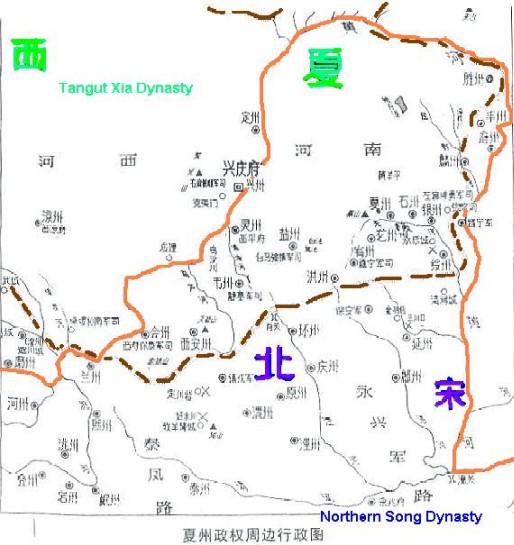
Li Jiqian attacked the Soong China's Qingyuan-jun Garrison. Duan Yi surrendered to the Tanguts. Li Jiqian then attacked Dingzhou and Huaiyuan; Soong official Cao Can assembled the nomadic people as mercenaries and defeated Li Jiqian.
In A.D. 1002, Li Jiqian attacked Lingzhou a third time. Soong 'zhi zhou shi' (magistrate equivalent) Fei Ji defended the city for over one month, cut his finger and wrote a blood letter for requesting relief with the Soong court, and later died in the street fighting. Wang Chao made an excuse for not going to Lingzhou on time. After taking over Lingzhou, Li Jiqian renamed Lingzhou [Yinchuan area of Ningxia] to Xiping-fu and made it the capital of Xi-xia.
The Tanguts then set eyes on the Western Corridor.
One year later, Li Jihe of the Soong 'zhi Zhenrong-jun' Garrison wrote to the Soong court that a chieftain (i.e., a Tibetan) from Liugu (six valleys), by the name of Balaji (Panluozhi), intended to attack the Tanguts on behalf of Soong. Zhang Qixian proposed that Soong conferred the title of 'King of Liugu' and the post of 'zhaotao-shi' (the campaigning emissary) onto Balaji. Soong decided to offer Balaji the title of 'Shuofang jiedu-shi' (satrap or governor for the northern territories) onto Balaji. Balaji claimed that he had assembled a 60,000 strong army for fighting the Tanguts.
(Liugu or the six valleys tribal alliance, having its origin from the Yangfei-gu valley tribe, would be the remnants of the Tubo (Tibetan) state which was dissolved in A.D. 842 after its king ('zan-pu') Lang-da-ma was killed by the monks over the Buddhism suppression movement.
Along the Western Corridor, Zhang Yichao, 799-872, a Tang Dynasty general who was famous for re-asserting the Tang China's rule over the western territories, i.e., Today's Turkestan, in the aftermath of the Tang China's turmoil, had defeated the Tibetans in the Guazhou and Shazhou territories in A.D. 848, recovered the Xizhou (Turpan) territory in A.D. 850, recovered the Guazhou and Shazhou territories from the Tibetans in A.D. 851, and recovered the Liangzhou territory from the Tibetans in A.D. 861.)
To the east, Li Jiqian attacked Linzhou [Shenmu-xian of Shenxi, ceded by Soong in 1226] but he was defeated by Soong 'zhi zhou' (prefecture chief) Wei Jubao. Changing his direction to the west, Li Jiqian re-routed towards Xiliang (Western Liang or Gansu Prov) and killed a Soong official called Ding Weiqing in Nov 1004.
Li Jiqian took over Liangzhou by pretending an attack at Huanzhou & Qingzhou.
Balaji, previously a vassal under jurisdiction of Xiliang district, would pretend to surrender to the Tanguts. When Balaji led his Liugu army to Xiliang for Li Jiqian to inspect on, Balaji would suddenly launch an attack at the Tanguts. Balaji shot an arrow at the eye of Li Jiqian. When Li Jiqian fled back to Lingzhou, he died of the wound in Jan 1004 at age 42 and was conferred the title of Emperor Taizu posthumously.
(During the late Ming dynasty, rebel Li Zicheng claimed descent from the Tanguts for his origin from a place called Jiqian-bu in today's northern Shenxi.)
Li Jiqian's son, Li Deming, was enthroned next. Tanguts notified the Khitans of the succession, and Khitans conferred the title of King Xiping-wang onto Li Deming.
In 1005, Soong Emperor Zhenzong sent a messenger to Li Deming for sake of pacifying him, and Li Deming dispatched general Wang Shen to Soong for seeking suzerainty. Cao Wei of Soong 'zhi Zhenrong-jun' Garrison proposed that Soong exterminated Xi-xia by taking advantage of Li Jiqian's death. Soong Emperor Zhenzong stated that Soong could not attack Tanguts while the Tanguts were in mourning status. Soong conferred the post of 'Dingnan-jun jiedu-shi' (satrap or governor for Quelling Turmoil Garrison) onto Li Deming and then added King Xiping-wang by copying the Khitan approach.
A peace treaty called the Jingde Truce was reached by Sept 1006.
In A.D. 1007, Li Deming obtained the Soong court's approval to open up the border trade post at the Bao'an-jun Garrison (today's Zhidan county of Shenxi Province).
Tibetan chieftain Balaji was killed by some alien tribe, and Liugu tribes erected Balaji's brother, Sibangduo (Siduodu), as the new chieftain. The Soong court continued the conferral of 'Shuofang jiedu-shi' onto Sibangduo. Sibangduo failed to rein in his people, and Sibangduo people defected to the Tibetans. Tibetan chieftain proposed to the Soong court that they launch a coordinated attack at Li Deming. Soong Zhenzong declined it. Tibetans, however, invaded Soong's Qinzhou territories, and Soong official at Qinzhou, Cao Wei, defeated the Tibetans. Soong conferred the title of 'ningyuan da jiang-jun' (grand general for Ningyuan area) and 'tuan lian shi' (militia emissary) of Aizhou onto Tibetan chieftain.
Declaration of the Grand Xia Dynasty
Tangut ruler Li Deming, aka Zhao Deming, had a son by the name of Li Yuanhao.
Li Deming sought Khitan Princess Xingping-gongzhu as a bride for Li Yuanhao.
Li Deming set his capital city at Xingzhou (Yinchuan, Ningxia).
Li Yuanhao often proposed to Li Deming that the Tanguts should defeat the Huihe (Uygur) and Tibetans first. In A.D. 1028, Li Yuanhao led a surprise attack at Ganzhou [Zhangye of Gansu Province], and took over the city from Huihe.
Huihe chieftain Yeluoge committed suicide.
The Tanguts further subdued Tibetan chieftain Zhepuyoulongbo.
The Tanguts then took over Shuzhou, and pacified General Cao Jushun, i.e., the Tang China's Guiyi-jun [returning the loyalty] Army commander at the last Tang China's stronghold Guazhou.
Li Deming made Li Yuanhao into a crown prince. Li Yuanhao often instigated his father in rebelling against Soong. After the death of Li Deming, Li Yuanhao got enthroned. Soong dispatched 'gongbu langzhong' (minister for engineering department) Yang Ji to the Tanguts and continued the previous conferrals onto Li Yuanhao. The Khitans conferred Li Yuanhao the title of 'King of Xia'.
Li Yuanhao abandoned the Chinese surname, and adopted the Tuoba Wei's Weiming-shi clan name.
In A.D. 1034, Li Yuanhao attacked the Huanqing territories.
Soong General Wei Tong attacked the hind of the Tanguts. The Tanguts then invaded Soong territories again. Li Yuanhao i) captured Qi Zongju who led the relief soldiers from Huanqing and ii) defeated Wang Wen who led relief soldiers from Ningzhou. Then, Li Yuanhao released Qi Zongju for sake of striking peace with Soong. After that, Li Yuanhao dispatched an army of 25,000 against the Tibetans. The Tanguts were defeated and Tangut general Sunuer was taken as a prisoner of war. Li Yuanhao personally led an expedition against the Tibetans, but he was defeated by the Tibetans, too.
Li Yuanhao then changed target to attack the Huihe (Uygur) people. In A.D. 1036, Li Yuanhao took over the Huihe territories of Guazhou (Gansu-xian and Anxi-xian of Gansu), Shazhou (Tunhuang-xian of Gansu) and Suzhou (Jiuquan of Gansu Province), and hence the Tanguts controlled the He-xi Corridor for 191 years.
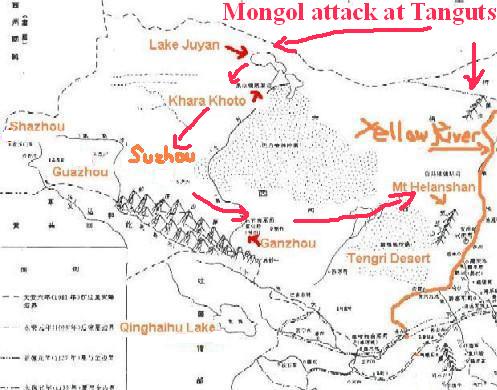
At this moment, two Chinese intellectuals from the Huazhou area went to Lingzhou (Lingwu-xian of Ningxia) to see Li Yuanhao. Li Yuanhao (Zhao Yuanhao) adopted the advices of the two guys in building a Xi-xia kingdom, renamed Lingzhou to Xingzhou (where 'xing' means prospering) and xiping-fu into xingqing-fu (i.e., today's Yinchuan area of Ningxia), declared a dynastic title of "Da Xia" (Grand Xia), established 16 departments and ministries, instituted 12 army supervisors (i.e., 'jian-jun si'), recruited an official army of 500,000, and devised the written Tangut characters.
The Tangut's self-naming purportedly called their dynasty by the 'Da [grand] Bai [white] Gao [tall] Xia Nation'.
The Tanguts adopted a 'bald hair' decree, which was to restore the barbarian hair-cutting style.
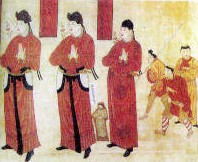 The Tangut records claimed that a minister, by the name of Ye-li-ren-rong, spent years on a high storey building in devising the scripts, for which Li Yuanhao conferred him Marquis Fuping-hou posthumously and Tangut Emperor Renzong conferred him King Guanghui-wang posthumously in A.D. 1162.
In A.D. 1038, Li Yuanhao sent messenger to the Soong court to notify his imperial entitlement as Xia Emperor Jingzong. In his letter, Li Yuanhao claimed Toba (i.e., Xianbei) ancestry and heritage dating from Toba Wei Dynasty.
Among Western Xia territories would be: Xiazhou [Jingbian-xian], Suizhou [Suide of Shenxi], Yinzhou [Mizhi-xian of Shenxi], Youzhou [east of Jingbian-xian of Shenxi], Jingzhou [Mizhi-xian of Shenxi], Lingzhou [Lingwu], Ganzhou [Zhangye of Gansu], Xingzhou [Yinchuan], Liangzhou [Wuwei of Gansu], Guazhou [east of Gansu-xian/Anxi-xian of Gansu], Shazhou [Dunhuang of Gansu], Suzhou [Jiuquan of Gansu], Lanzhou [Lanzhou, surrendered by Tibetans in A.D. 1126], Linzhou [Shenmu-xian of Shenxi, ceded by Soong in 1126], Fuzhou [Fugu-xian of Shenxi], and Fengzhou [east of Hetao in Inner Mongolia] and etc.
The Tangut records claimed that a minister, by the name of Ye-li-ren-rong, spent years on a high storey building in devising the scripts, for which Li Yuanhao conferred him Marquis Fuping-hou posthumously and Tangut Emperor Renzong conferred him King Guanghui-wang posthumously in A.D. 1162.
In A.D. 1038, Li Yuanhao sent messenger to the Soong court to notify his imperial entitlement as Xia Emperor Jingzong. In his letter, Li Yuanhao claimed Toba (i.e., Xianbei) ancestry and heritage dating from Toba Wei Dynasty.
Among Western Xia territories would be: Xiazhou [Jingbian-xian], Suizhou [Suide of Shenxi], Yinzhou [Mizhi-xian of Shenxi], Youzhou [east of Jingbian-xian of Shenxi], Jingzhou [Mizhi-xian of Shenxi], Lingzhou [Lingwu], Ganzhou [Zhangye of Gansu], Xingzhou [Yinchuan], Liangzhou [Wuwei of Gansu], Guazhou [east of Gansu-xian/Anxi-xian of Gansu], Shazhou [Dunhuang of Gansu], Suzhou [Jiuquan of Gansu], Lanzhou [Lanzhou, surrendered by Tibetans in A.D. 1126], Linzhou [Shenmu-xian of Shenxi, ceded by Soong in 1126], Fuzhou [Fugu-xian of Shenxi], and Fengzhou [east of Hetao in Inner Mongolia] and etc.
Tangut Emperor Xia-jing-zong launched numerous wars against the Soong territory in the attempt at breaking the northeast-to-southwest Mt. Hengshan blockade line.
In A.D. 1040, Tangut Emperor Jingzong launched the Battle of Sanchuankou to lay a siege of Yanzhou.
At Sanchuankou, the Tangut army defeated the Soong relief army led by Liu Ping and Shi Yuansun.
Soong dispatched Xia Song, Haan Qi and Fan Zhongyan to the northwestern territory.
After the Sanchuankou defeat, the Soong emperor adopted the defensive strategy, and ordered Haan Qi to be in charge of the Jingyuan-lu Route and Fan Zhongyan in charge of the Fuyan-lu (Fushi-Yenan) Route.
In 1041, the Tanguts attacked the Weichuan and Huaiyuan area.
Xia Song sent Ren Fu to the relief of Huaiyuan.
The Soong relief army, plus the Jingyuan-lu garrison troops, departed Yanglongcheng (Guyuan, Ningxia) for the Tangut territory.
The Tanguts, who were defeated at Zhangyibu, pulled back to induce the Soong army into a chase, and ambushed the Soong army at Haoshuichuan (Longde, Ningxia).
For the loss of over 10,000 Soong army troops at Haoshuikou, the Soong emperor could not bear to eat.
Teng Zijing, a friend of Fan Zhongyan at Jingzhou, made a sacrifice to the dead, over which he was censured for wasting the government funds and banished to the Baling-jun prefecture.
After the Haochuankou debacle, the Soong army shrank the defense to the Fuyan-lu (Fushi-Yenan) Route,
the Huanqing-lu Route,
the Jingyuan-lu Route and
the Qingfeng-lu Route.
In A.D. 1042, the Tangut emperor adopted the advice of Zhang Yuan to circumvent the defense lines to attack the Soong Jingzhao-fu prefecture, namely, attacking east against Weizhou from Pengyangcheng (Guyuan, Ningxia).
The Tangut army tried to breach the Jingyuan-lu defense line.
Wang Yan, 'jinglüe-shi' for the Jingyuan-lu Route, sent deputy Ge Huaimin against the Tanguts.
Ge Huaimin and about ten thousand troops were destroyed by the Tanguts at the Dingchuanzhai Campaign.
The Tanguts intruded to Weizhou (Zhenyuan, Gansu) but had to withdraw after learning that the other Tangut prong was defeated at Yuanzhou (Zhenyuan, Gansu) by Soong 'zhi zhou' Jing Tai.
In AD 1044, i.e., Soong Emperor Renzong's 4th year of the Qingli Era, the Tanguts and the Soong Chinese reached the Qingli Peace Accord.
The Tanguts, back in 1043, were attacked by the Khitans over the dispute related to the Tanguts' defecting to the Western Xia territory from the southwestern Khitan territory.
In AD 1044, Khitan Emperor Xingzong attacked the Tanguts again.
The Khitan-Tangut wars continued till AD 1049.
In AD 1048, the Tangut emperor was killed by his crown prince Ning-ling-ge.
Previously, Emperor Xia-jing-zong revoked the titles of his empress Ye-li-shi, and the crown prince.
The revocation of dowager-empress Ye-li-shi's title led to the resentment of the empress's two brothers, i.e., Ye-li Wang-rong and Ye-li Yu-qi --who were both killed by the Tangut emperor in AD 1043 as a result of Soong General Zhong Shiheng's sowing dissension.
Ye-li Yu-qi was the Tanguts general stationed at Mt. Tiandu-shan (the heavenly capital), i.e., Mt. Hengshan, that separated the Tangut territory from Soong.
Further, the Tangut emperor took over the crown prince's wife as Empress Mo-yi-shi back in AD 1047.
At the instigation of minister Mo-zang E-pang whose sister Mo-zang-shi was Xia-jing-zong's another empress, the crown prince and a Ye-li clansman intruded into the palace to assassinate the emperor.
After the death of Tangut Emperor Xia-jing-zong, the in-law family took over the power.
Mo-zang E-pang killed the crown prince and his mother, dowager-empress Ye-li-shi.
Mo-zang E-pang made his sister's one-year-old son, Li Liangzuo, into an emperor, i.e., Tangut Emperor Yizong.
Tangut rulers (from A.D. 873 to 1038) and emperors (from A.D. 1038 to 1227), would include:
Tuoba Ningcong (the 6th century)
?
Tuoba Chici (the 7th century)
Tuoba Sitou [Tuoba Chici's nephew; Tuoba Sidai - at the time of Tang Emperor Xuanzong (r. A.D. 712-756)]
?
Tuoba Shouji [son of Tuoba Sitou - at the time of Tang Emperor Xuanzong (r. A.D. 712-756)]
Tuoba Chaoguang
Tuoba Qianhui
Tuoba Chongjian
Tuoba Sigong (grandson of Tuoba Qianhui and son of Chongjian; Li Sigong, r. A.D. ? -895)
Tangut ruler Li Sijian (Tuoba Sijian, r. A.D. 895-900, 908)
Tangut ruler Li Chengqing (Li Renqing, r. A.D. 900-908)
Tangut ruler Li Yichang (r. A.D. 908)
Tangut ruler Li Renfu (r. A.D. 908-933)
Tangut ruler Li Yichao (r. A.D. 933-935)
Tangut ruler Li Yiyin (Li Yixing, r. A.D. 935-967)
Tangut ruler Li Guangrui (Li Kerui, r. A.D. 967-978)
Tangut ruler Li Jiyun (r. A.D. 978-980)
Tangut ruler Li Jipeng (r. A.D. 980-982)
Tangut ruler Li Jiqian (Emperor Taizu, r. A.D. ?-1004)
Tangut ruler Li Deming (Emperor Taizong, r. A.D. 1004-1032)
Emperor Jingzong (Li Yuanhao, r. A.D. 1032-1048)
Emperor Yizong (Li Liangzuo, r. A.D. 1048-1068)
Emperor Huizong (Li Bingchang, r. A.D. 1068-1086)
Emperor Chongzong (Li Qianshun, r. A.D. 1086-1139)
Emperor Renzong (Li Renxiao, r. A.D. 1139-1193)
Emperor Huanzong (Li Chunyou, r. A.D. 1194-1206)
Emperor Xiangzong (Li An'quan, r. A.D. 1206-1211)
Emperor Shenzong (Zun-zong) (Li Zunxu, r. A.D. 1211-1223)
Emperor Xianzong (Li Dewang, r. A.D. 1223-1226)
The last ruler Xia-modi (Zhao Xian/Li Xian, r. A.D. 1226-1227)
 The Scourges-of-God Tetralogy
would be divided into four volumes covering
Hsiung-nu (Huns), Hsien-pi (Xianbei), Tavghach
(Tuoba), Juan-juan (Ruruans), Avars, Tu-chueh (Turks), Uygurs (Huihe), Khitans, Kirghiz, Tibetans, Tanguts, Jurchens, Mongols and Manchus and
southern barbarians.
Book I of the tetralogy would extract the contents on the Huns from
The Sinitic Civilization-Book II,
which rectified the Han dynasty founder-emperor's war with the Huns on mount Baideng-shan to A.D. 201 in observance of the Qin-Han dynasties' Zhuanxu-li calendar.
Book II of the Tetralogy would cover the Turks and Uygurs.
And
Book IV would be about the Manchu conquest of China.
The Scourges-of-God Tetralogy
would be divided into four volumes covering
Hsiung-nu (Huns), Hsien-pi (Xianbei), Tavghach
(Tuoba), Juan-juan (Ruruans), Avars, Tu-chueh (Turks), Uygurs (Huihe), Khitans, Kirghiz, Tibetans, Tanguts, Jurchens, Mongols and Manchus and
southern barbarians.
Book I of the tetralogy would extract the contents on the Huns from
The Sinitic Civilization-Book II,
which rectified the Han dynasty founder-emperor's war with the Huns on mount Baideng-shan to A.D. 201 in observance of the Qin-Han dynasties' Zhuanxu-li calendar.
Book II of the Tetralogy would cover the Turks and Uygurs.
And
Book IV would be about the Manchu conquest of China.
From the Khitans to the Jurchens & Mongols: A History of Barbarians in Triangle Wars and Quartet Conflicts
, i.e., Book III of
the Scourge-of-God-Tetralogy,
focused on the Khitans, Jurchens and Mongols, as well as provided the annalistic history on the Sui and Tang dynasties, the
Five Dynasties & Ten Kingdoms, and the two Soong dynasties.
Similar to this webmaster' trailblazing work in rectifying the Han dynasty founder-emperor's war with the Huns to 201 B.C. in The Sinitic Civilization - Book II,
this Book III of the Scourge-of-God-Tetralogy
collated
the missing one-year history of the Mongols' Central Asia campaigns and restituted the
unheard-of Mongol campaign in North Africa.
|
The Scourges of God: A Debunked History of the Barbarians" - available at iUniverse|Google|Amazon|B&N
From the Khitans to the Jurchens & Mongols: A History of Barbarians in Triangle Wars and Quartet Conflicts
(The Barbarians' Tetralogy - Book III)
Epigraph,
Preface,
Introduction,
Table of Contents,
Afterword,
Bibliography,
References,
Index
|
|
Table of Contents
(From the Khitans to the Jurchens & Mongols: A History of Barbarians in Triangle Wars and Quartet Conflicts)
Chapter VII: The Tibetans .........................................................................................................80
Origin of the Qiangs and Tibetans ..............................................................................................82
The Qiang [1] vs. the Di [1] People ...........................................................................................84
The Tuyuhun Xianbei, the Tibetans & the Tanguts .......................................................................87
The Tibetans vs. the Tuyuhun ......................................................................................................89
The Tibetans vs. the Tang Chinese ..............................................................................................91
The Khitans, the Shatuo, the Tanguts vs. the Five Dynasties .......................................................170
Chapter XV: The Tangut Xia Dynasty (A.D. 1038-1227) ..........................................................258
Origin of the Tanguts ................................................................................................................259
The Tanguts vs. the Five Dynasties ...........................................................................................261
The Tanguts vs. the Soong Dynasty ...........................................................................................263
The Tanguts Attacking the Western Corridor Garrisons, the Tibetans & the Uygurs.......................264
Launch of the Grand Xia (Da-Bai-Gao-Xia) Dynasty .....................267
The Soong Debacle at the Battles of Sanchuankou (in A.D. 1040) , Haoshuichuan
(in A.D. 1041) and Dingchuanzhai (in A.D. 1042) ..............................271
The Triangle & Quartet Wars Among the Khitans, Jurchens, Tibetans,
Tanguts and Soong ..............................................273
The Triangle & Quartet Wars Among the Tanguts, Jurchens, Mongols and Soong .......................280
The Mongols' Attacking the Jurchen & Soong's Western Territories after
Elimination of the Tangut Xia Dynasty ............................360
Chapter XXII: The Mongol Attacks on the Tatars, Naimans, Keraits, Tanguts,
Jurchens, Khitans in Manchuria & Kara-Khitay (from A.D. 1202
to 1219) .....403
Continuous Mongol Attacks on the Tanguts ...............................................................................421
Chapter XXIV: Demise of the Tangut Xia Dynasty (A.D. 1038-1227) ........................................453
Southern Soong's Triangle & Quartet Wars with the Tanguts, Jurchens and
the Mongols .................................................................553
|
|
Khitans-Jurchens-Tanguts-Soong
The Khitans had married over their princess to the Tangut emperor, and had good diplomatic relationships with the Tanguts.
This could be due to the Khitans and Tanguts sharing the same origin from the ancient Xianbei barbarians.
However, the Khitans and Tanguts had disputes and wars as well, as a result of some triangular relationship with the Chinese.
The Tanguts, back in A.D. 1043, were attacked by the Khitans over a dispute related to the Tanguts' defecting to the Western Xia territory from the southwestern Khitan territory.
The Khitans and later Jurchens, in different border areas, possessed 'zhaotao si' sub-ministries, like the southwestern subministry for the Tanguts,
the northwestern for Mongolia and Siberia,
and
the northeastern for the Da-da2 in today's northwestern and northern Manchuria.
In A.D. 1044, Khitan Emperor Xingzong attacked the Tanguts again. The Khitan-Tangut wars continued till A.D. 1049.
Some old Japanese texts carried a sentence to this effect: "In the eras of Koryo & Soong, about the 1st year of Huangyou Era, General Yi-gou [Yi-jun?] from Si-jiang [four rivers] fought the Khitans, the Tanguts and Soong Emperor Renzong (Zhao Zhen, r. A.D. 1023-1063)'s armies and lost. He then fled to Ise in Japan."
In the Chinese classics, there were limited data about the triangular wars,
with the Khitans' messages to the Soong court in regards to their campaign against the Tanguts, claiming that the Khitans attacked the Tanguts in the
first year of Huangyou Era, i.e., A.D. 1049, and further reported that they had succeeded in defeating the Tanguts in A.D. 1054, i.e., the first year of the Zhihe Era.
After Soong Emperor Renzong (r. A.D. 1023-1063) passed away, the Khitan emperor took the Soong emissary's hands into his hands, and shed tears, saying that the Khitans and the Soong Chinese had no war for 42 years.
Wang Shao in A.D. 1072 took Wusheng (harmonious, Lintao) which was renamed to Xi1zhou, Taozhou, and Minzhou.
In A.D. 1073,
Wang Shao twice took over He2-zhou (yellow river, Linxia), which led to Qiangic chieftain Mu-zheng's escaping to Xiangzicheng for rebellion, and further pacified Mu-zheng's brother Xia-wuchi at Malianchuan.
Wars with the Tibetans or Qiangs went on from February to August-September, by which time Wang Shao quelled
Danzhou (Danchang), opened up the Tao-he-lu circuit, quelled Mu-lingzheng's tribe in
Minzhou, defeated the Qinglong-zu (green dragon) at Chuoluo-chuan,
pacified Diezhou (overlapping) chieftain Qin-lingzheng and Taozhou chieftain Si-guodun.
In A.D. 1081, Tangut dowager-empress Liang-taihou put son Emperor Huizong (Li Bingchang) under house arrest at a water fort in Xingqing-fu (Yinchuan).
In A.D. 1081, Soong Emperor Shenzong ordered a five-prong attack against the Tanguts under the supervision of eunuch Li Xian.
Li Xian was to depart the Xihe-lu circuit;
Chong E4 was to depart the Fu1yan-lu circuit;
Gao Zunyu was to depart the Huanqing-lu circuit;
Liu Changzuo was to depart the Jingyuan-lu circuit; and
Wang Zhongzheng was to depart the Hedong-lu circuit.
Tibetan chieftain Dong Zhan was to cross the Yellow River to attack Liangzhou as a diversionary force.
During the A.D. 1081 five-prong campaign,
Liu Changzuo's army, whose target was Lingzhou, defeated 20,000 to 30,000 Tanguts at the Moji'ai-kou (grind belly-button) pass,
sacked the Tangut grain barn at Mingshachuan (humming sand river),
and pushed to Lingzhou.
Gao Zunyu, envious of Liu Changzuo's feats, delayed the junction at Lingzhou.
The Tangut relief army broke the Yellow River canal water to inundate the Soong army camp, with Gao Zunyu losing 74,000 troops out of 87000.
Chong E4 sacked Yinzhou, Shizhou (stony) and Xiazhou but had to pull back from Suojiaping in face of snow and running out of the grains, with only 30,000 troops left from the original force of 93000.
Wang Zhongzheng, departing Linzhou (giraffe prefecture), crossed the Wuding-he River and reached You4zhou along the riverbank but had to withdraw in face of deserts and running out of grains, with loss of 20,000 troops out of 60,000.
Li Xian's army took over Lanzhou, reached mount Tiandushan (heavenly capital), and burnt the Tangut seasonal palace before retreating.
The Tanguts, under the command of the Liang family brothers, undertook the scorched-earth approach to repel the Soong army.
In A.D. 1089, the Tanguts released some Soong prisoners of war from the Yongle siege battle, with Soong returning the four palisades of Mizhi, Hulu (gourd), Futu (Buddha) and Anjiang (peaceful border) to the Tanguts.
The Tanguts demanded the return of Lanzhou, which Soong declined.
Soong prime minister Zhang Dun advocated to Soong Emperor Zhezong to stop the tribute payment to the Tanguts as well as to refrain from ceding land.
In A.D. 1091, the Tanguts attacked the Jingyuan-lu and Xihe-lu circuits.
Soong 'tidian Qingfeng-lu xingyu' You Shixiong built seven palisades from Dingxi to Tongwei to counter the Tanguts.
In A.D. 1095, Zhang Dun ceased talks on the border demarcation with the Tanguts, stopped the annual bestowals to the Tanguts and ordered to build ramparts and palisades against the Tanguts.
In A.D. 1096, the Tanguts intruded into the Soong territory under the pretext of disputed borderline.
In A.D. 1096, Soong 'zhi Weizhou' Zhang Jie proposed to Soong Emperor Zhezong with the plan to build forts and palisades so as to wrestle over mount Tiandushan and control mount Hengshan.
Tangut dowager-empress Liang-taihou, knowing that Soong General Guo Cheng was at the Pingxia-cheng fort, in October of A.D. 1098 launched another attack at the Pingxiacheng and Lingpingzhai forts
with 400,000 troops through the Moyanxia valley.
The Tanguts, with camps spreading out for one hundred leagues, laid a siege of six Soong forts in the Moyanxia valley and at the Pingxiacheng's locality Shimenkou.
The Tangut main army attacked Pingxia-cheng with bumping carts, tunnel digging and high tower carts that could carry hundreds of troops. The siege battle went on for thirteen days. Running short of the grains, the Tanguts, who already lost the fighting will after learning that Wang Min's Soong army had killed Tangut imperial son-in-law Mang-luo and Liu An and Zhang Cheng's Soong army defeated Tangut General Weiming-ji, withdrew after a huge northwestern wind blew apart the tower carts.
Chong Pu, against Wang En and other Soong generals' enthusiasm for joining Guo Cheng and She2 Keshi in the two forts, requested for a delay to let Guo Cheng and the two forts of 20,000 troops fight it out instead of throwing the limited number of the Soong relief army to the battle.
After the Tanguts began to retreat,
Zhang Jie ordered the Soong armies to chase to counterattack with six columns.
The Tanguts lost over twenty thousand troops.
After the debacle across the fronts, the Tanguts sent Weiming-miebu to the Khitans for help as well as conducted a clearing-supplies operation over fear of a Soong invasion.
The Soong army intruded deep into mount Tiandushan,
in late A.D. 1098 captured Tangut 'tong-jun' Weiming-a'mai and 'Xishou jian-jun' Meile-dubu,
captured over 3000 Tanguts troops together with Weiming-a'mai and Meile-dubu's command center, as well as over 100,000 cattle,
and took control of mount Tiandushan.
Separately, Soong General Li Zhingjie routed Tangut 'you-xiang[jun] Zhuoluo army jian-jun' General Renduobaozhong's army.
In A.D. 1099, the Tanguts requested with the Khitans for mediation with Soong.
In A.D. 1105, Tangut Emperor Chongzong married Khitan princess Yelü Nanxian.
What happened next was that in A.D. 1120, the Jurchens and the Soong Chinese reached a Hai-shang (above the Bo-hai Sea) Alliance agreement to pincer-attack the Khitans.
In A.D. 1122, the Jurchens defeated the Khitans in Manchuria, and the Khitans fled to the Yinshan Mountains of Inner Mongolia. Tangut General Li Liangfu came to the Khitan's aid with 30,000 soldiers. The Tanguts were defeated by the Jurchens, and most of the Tangut soldiers drowned themselves in a mountain torrent in a valley called 'Yegu' (wild valley). Jurchen General Zongwang wrote to the Tanguts asking them to pay tributes the same way as the Tanguts did to the Khitans. In A.D. 1124, the Tanguts accepted suzerainty with the Jurchens, and Jurchen Emperor Taizong (reign A.D. 1123-1135) ceded to the Tanguts the territories south of the Yinshan Mountains.
In A.D. 1122, Tangut Emperor Chongzong sent an army to aiding the Khitans again.
Jurchen General Wanyan Zongwang (Wanyan Wolibu, A.D. ?-1127) wrote to the Tangut emperor about ceding land to the Tanguts in exchange for capturing Liao Emperor Tianzuo-di should the Liao emperor seek asylum with the Tanguts.
Jurchen Emperor Taizong (r. A.D. 1123-1135) ceded to the Tanguts the ex-Khitan territories south of the Yinshan Mountains.
The Tanguts under Tangut Emperor Chongzong (r. A.D. 1086-1139), in collusion with the Jurchens, nibbled away the Soong land within the Yellow River sheath, that was known as the 'He-xi' (west of the Eastern Yellow River Bend) land.
|
|
When the Soong Chinese took over some lands west of 'shan-xi' (i.e., land to the west of Mountain) that was ceded to the Tanguts, Tangut Emperor (Li Qianshun) wrote to the Jurchens asking for intervention. The Jurchens, as appreciation of the alliance with the Soong Chinese against the Khitans, had earlier ceded nine prefectures of 'shan-xi' ex-Khitan territories to Soong, including today's Shenxi Province and 'he-nan' land (south of the Yellow River). The Jurchens, who had an earlier agreement to allow Soong to retake Peking from the Khitans, had helped Soong in the siege of Peking while the Soong army failed to take over Peking.
The Soong army under Dong Guan was sent to the south of the Yangtze for cracking down on the Fang La Rebellion. Hence, the Jurchens, in exchange for surrendering Peking to Soong per the alliance agreement, received the tax revenues of Peking as compensation. (Later, the Jurchens retook the territories of 'he-nan' / 'shan-xi' lands and Peking after defeating the Soong Chinese and capturing two Soong Emperors, Soong Huizong & Soong Qinzong.)
Tangut Emperor Chongzong (Li Qianshun) died in the year of A.D. 1139 (1140?). Li Qianshun's son, Li Renxiao, was enthroned as Tangut Emperor Renzong (AD 1140-1194 ?). The Tanguts, originally father-in-law of the Khitans, had once disputed with the Jurchens about the diplomatic etiquette when the Jurchen emissary insisted that the Tangut emperor used the minister protocol to receive the Jurchen imperial emissary (Wang A'hai). When Jurchen Emperor Xizong (Wanyan Dan) was killed by usurper Hailingwang (King of Hailing, i.e., Wanyan Liang, reign A.D. 1149-1161), the Tanguts reprimanded the Jurchen emissary as to the killing. The Tanguts would come to pay respect to the Jurchens' new ruler Hailingwang one year later, i.e., in A.D. 1150.
Around A.D. 1161, the Jurchens attacked the Soong Chinese. Soong invaded today's Gansu Province. The Tanguts took over some cities from the Jurchens as well as invaded the Soong territories. Jurchen Emperor Shizong (Wayan Yong) enthroned in A.D. 1161. The Tanguts offered some cities to the Jurchens and requested for the Jurchen assistance in attacking the Soong Chinese.
In A.D. 1164, the Tanguts sent an official, 'da-fu', to the Jurchens.
At one time, Emperor Li Renxiao sought aid with Jurchen Emperor Jin Sizong for quelling rebellion and hence the Tanguts allied with Jurchen Jin in A.D. 1165.
Tangut prime minister, Ren Dejing, had been assisting the Tangut emperor for over 20 years. Ren Dejing executed many Tangut royal family members in preparation for an eventual usurpation. In A.D. 1170, Ren Dejing obtained the southwestern Tangut territories (including the Lingzhou Prefecture) as his fief. Ren Dejing forced the Tangut emperor into petitioning for 'conferral' by the Jurchen emperor. Jurchen Emperor Shizong took advice from 'shang-shu' Li Shi and refused to approve the Tangut emperor's petition. Hence, Ren Dejing contacted the Soong Chinese for assistance. Tangut Emperor (Li Renxiao) intercepted the Soong messenger's letter to Ren Dejing and managed to have Ren Dejing and his cronies captured and executed.
Tangut Emperor (Li Renxiao) continued to surrender tributes and gifts to the Jurchens in A.D. 1172 and A.D. 1177. The Tanguts and the Jurchens set up trading posts around the border areas of today's Shenxi Province and had disputes over traders' pillaging. In A.D. 1191, some Tangut border generals killed a Jurchen general. The Tanguts apologized to Jurchen Emperor Zhuangzong (Wanyan Jing, reign 1190-1208) by executing the perpetrators.
Tangut Emperor (Li Renxiao) died in A.D. 1193. Li Renxiao's son, Li Chunyou, would be Tangut Emperor Huanzong (1194-1206 ?). In A.D. 1197, trading posts were re-established. In A.D. 1200, Li Chunyou's mother got ill. The Jurchens dispatched imperial doctors (Shi Deyuan and Wang Lizhen) to the Tanguts. In A.D. 1206, Li Renxiao's brother, Li An'quan, deposed Tangut Emperor Huanzong. Li An'quan enthroned as Emperor Xiangzong (1206-1211 ?). Tangut emperor Huanzong died a few months later while under the house arrest. Li An'quan forced Li Chunyou's mother into petitioning with the Jurchens for conferral of an emperor's title. The Jurchens approved the request.
The Mongols-Tanguts-Jurchens-Soong
The Mongols attacked the Tanguts in A.D. 1205.
The Mongols altogether attacked the Tanguts six times in major campaigns,
in
A.D. 1205,
A.D. 1207-1208,
A.D. 1209, and
A.D. 1217-1218,
A.D. 1224,
and A.D. 1226-1227.
In A.D. 1209, 1217, and 1226-1227, the Mongols reached Mt Helanshan three times and laid siege of Xingqing-fu city.
Minor wars between the Mongols and Tanguts occurred in A.D. 1213, when the Mongols attacked the Jurchens and raided the Yellow River bend cities that bordered with the Tanguts;
and again in A.D. 1216,
when Salizhi-wupi (? Sali-zhiwupi) and Sanmohe-badu's Mongols likely borrowed a path through the Tangut territory to attack eastward through the Guan-zhong land against the Tong-guan Pass and Jurchen capital city of Bian-jing.
In A.D. 1205, Genghis Khan (Timuchin) invaded the Tangut territories and took over the city of Luo-si (i.e., Jingluosi-cheng) and Lijili-zhai.
In A.D. 1207, Genghis Khan attacked the Tanguts again and took over the city of Ke-wo-luo-hai, i.e., Wulahaicheng (Wo-luo-hai-cheng).
The Mongols continued south to attack Hanhailuocheng but withdrew after failure to sack the city.
In A.D. 1209, the Mongols detoured through the Black Water Lake to the west to attack Hanhailuocheng.
The Tangut emperor sent son Li Chengzhen, army minister ('da dudu-fu ling') Gao Yi4 and 50,000 troops to the relief.
Tangut General Weiming-ling-gong, with Weiming meaning the Tuoba Wei surname, after resisting the Mongols for two months, was defeated, captured and killed.
The Mongols, after sacking Hanhailuo-cheng (i.e., Wulahai-cheng), and consecutively sacking Keyimen (quell alien gate) after two months' siege, then attacked south against the Zhongxing-fu (i.e., today's Yinchuan area of Ningxia).
The Jurchens under Wanyan Yongji refused to send aid.
By Dec, however, the flood destroyed the Mongol dike and flooded the Mongol camps instead.
In Jan of A.D. 1210, siege of the Tangut capital was lifted when the waters, breached by the Mongols for flooding the Xia capital, flowed to the Mongol camp instead. Peace was secured only when Tangut emperor Li An'quan delivered his youngest daughter to Genghis Khan as a bribe. After the Mongols left, the Tanguts, angry that the Jurchens did not come to their aid, broke the peace treaty with the Jurchens.
In A.D. 1211, Li An'quan died. A royal member was selected as Tangut Emperor Shenzong (1211-1223 ?). Taking advantage of the Jurchen's defeat at Huihebao (Huihebu), the Tanguts raided into the Jurchen territories. In A.D. 1212 and 1213, the Tanguts attacked the Jurchens four times. In A.D. 1213, the Jurchens reprimanded the Tanguts, but the Tanguts continued to infringe on the Jurchen territories, including the Yan'qing area of today's Shenxi Province. The Jurchens fought back in A.D. 1215. In A.D. 1216, the Jurchens captured a Tangut spy who disclosed that the Tanguts had colluded with the Soong Chinese in attacking the Jurchens.
In January of A.D. 1217, the Tanguts sent a cavalry force of 30,000 to joining the Mongol siege of Pingyang. The Mongol-Tangut force failed to sack Pingyang.
In A.D. 1217, the Jurchens launched a second battlefront by initiating the war of annual tributes against Southern Soong.
In western China, in April, Wugulun-qingshou and Wanyan-saibu were ordered to attack Soong. Wanyan-saibu defeated Soong at Xinyang and Longshan consecutively, and then crossed the Huai-shui River to take two passes in Guangzhou (Guanghua, Hubei). In May, the Jurchens defeated the Tanguts at Dabeicha in western China.
In A.D. 1217, a Jurchen general at Qingyang, General Qingshannu, defeated a Tangut army of 30,000. After more rounds of fighting, the Jurchens intended to have peace talk with the Tanguts. In A.D. 1218, Qingshannu passed on the Tanguts' wish to have peace talk, but the Jurchen court ignored it. Wars continued till A.D. 1223. The Tangut emperor's son, Deren, requested that the Tanguts have peace with the Jurchens; Deren stated that he would rather be a monk than continuing wars with the Jurchens; and Deren was exiled to the Lingzhou Prefecture. This year, the Mongols attacked the Tanguts. The Jurchen generals requested for a campaign against the Tanguts by taking advantage of the Mongols' entanglement with the Tanguts. But the Jurchen governor in Shenxi advised against this proposal. The Tanguts continued to raid into the Jurchen territories. The Jurchens and the Tanguts had ten years of border wars since A.D. 1213.
Tangut Emperor Shenzong passed away in this year. His son, Li Dewang, was enthroned as Tangut Emperor Xianzong (1223-1226 ?). In A.D. 1224, the Jurchens and the Tanguts reached a peace agreement and promised to be brothers.
Since the Western Xia had refused to provide troops in the war against the Khwarizm, and moreover, signed another alliance treaty with the Jurchen Jin, Genghis Khan led a force of 180,000 troops for a new campaign against the Tanguts in A.D. 1225.
One year earlier, in A.D. 1224, Mongol omnipotent magistrate for Northern China, i.e., Bei-lu, already attacked the Tanguts' Yinzhou city where tens of thousands of the Tanguts died and defender Ta-hai (Taqai) was caught alive.
Bei-lu, after father Muhuali’s death in March of A.D. 1223, paid a visit to Genghis Khan in
Central Asia in A.D. 1223, and was ordered by Genghis Khan to attack the Tanguts.
Shi Tianze and
Liu Heima participated in Bei-lu's A.D. 1224 campaign with the Han-ethnic Mongol armies from
Hezhong-fu and Jiangzhou, i.e., the area from the concave-in area of the Southeastern Yellow River Bend.
History annals contained an entry which was about the
Mongol khan’s wish to return to China through India, i.e., the Wakhan Corridor path, but was discouraged from doing so with the
prospect that the rebellious Tanguts could be waiting on the other side of India.
This alternatively debunked the prevalent history claims that the Mongols refrained from attacking India, allowing Khwarazm sultan Jala ad-Din to rebuild an army to return to Persia.
Genghis Khan did not end the India campaign till late 1224.
Ke Shaomin's revisionist Xin Yuan Shi, carrying the shortened or short-changed chronology,
claimed that Genghis Khan [after the purported A.D. 1224 {should be 1225} summer break at the Erdis] in the spring of A.D.
1225 (should be 1226) divided the conquered land among four sons; and that in the autumn decreed
to campaign against the Tanguts.
In A.D. 1226, Emperor Xianzong died consecutively. The last Tangut ruler ruled for only one year. The Tangut Xi-xia Dynasty ended in A.D. 1227 under the Mongol attacks.
A Tangut minister, Wang Lizhi, was dispatched to the Jurchens for intermarriage. Hence Wang Lizhi stayed on in the Jurchen territories, responsible for settling the Tangut refugees.
The Mongol Attack on the Tanguts
In the spring of 1226, Genghis Khan, after zoning the fiefdoms for his four sons, attacked Tanguts on the pretext that no hostage was sent in yet.
The Mongols, with a force of 180,000 troops, attacked the Tanguts in A.D. 1226.
Purportedly, Genghis Khan, en route of return from Central Asia, first attacked the Tanguts' Shazhou city and laid the siege for half a year, where the Tanguts burnt dead the Mongols digging through a tunnel and the Mongols withdraw the siege for a retreat to Mongolia after Tangut Emperor De-wang agreed to send in hostage. This appeared to be a forgery record from Wu Guangcheng's Xi-xia Shu Shi4 (western Xia’s anecdotes), something built on similar misunderstandings of other European and Chinese historians' puzzle over the Mongol mass murderer's whereabouts in A.D. 1224-1226.
Two columns of armies were arranged, with one prong attacking Shazhou from the west, and another prong striking southward against Xi-xia.
The eastern route took over
Heishuicheng in February.
In the summer of A.D. 1226, the Mongol western route, after sacking Shazhou, took over Suh4zhou and Gan1zhou.
In the autumn, the Mongols took over Xiliang-fu, where Wo-zhakui, son of former Tangut prime minister Wo-daochong under emperor Xia-renzong, surrendered to the Mongols.
The Mongols trespassed the Tengri Desert for the "Yellow River Nine Winding" and took over Yingli.
What happened was that the Mongols, at the same time of laying a siege of Shazhou, sent
Subetei across the Qilian-shan mountains for attacking the Chaidamu (Tsaidam, Qaidam) basin and
the Yellow River Winding Area.
Subetei joined the He-xi (west of the Yellow
River) campaign, crossed the Da-qi (Great, Tengri) desert to defeat the Saliweiwu[er] (Yellow Uygur),
Tele (? Teqin [Turkic or Uygur prince]), and Chimin tribes [in Genghis Khan's 21st year or A.D. 1226 per
Xin Yuan Shi].
A separate contingent was sent across the Yellow River for attacking Xiazhou (Baichengzi of Jingbian), while the main Mongol army swept the Yellow River winding area as well as attacking the Tangut capital city district from south to north.
By November, two columns of Mongol armies pincer-attacked the Tangut Xiping-fu city, i.e., Lingzhou (Yinchuan),
defeated Weimingling-gong's 100,000 Tangut relief army from Zhongxing-fu, and then sacked Lingzhou.
After the Battle of Lingzhou, the Mongols pushed against Zhongxing-fu (Yinchuan; former Xingzhou), i.e., the Tangut capital city, and launched an encirclement attack from Yan2zhou (Yanchi [salty pond] of Dingbian) to the east.
In June of A.D. 1227, the new Xi-xia emperor, i.e., Tangut Emperor Xia-modi (Zhao Xian/Li Xian, r. A.D. 1226-1227), being attacked by the Mongols, surrendered to the Mongols by requesting for one month grace period.
On July 15th (Gregorian August 28th) of A.D. 1227, i.e., three days after Genghis Khan's death, Tangut Emperor Xia-Modi left the capital for the Mongol camp where Tolui (Tu-lei) killed him.
The Tangut Xi-xia dynasty ended in A.D. 1227 under the Mongol attacks.
The Tangut Xi-xia Dynasty ended in A.D. 1227 under the Mongol attacks.
The Mongols, to consolidate rule over the conquered people, repeatedly resettled the Tanguts across away from the Xi-xia homeland, just relocating the Chinese to the Muslim world and the Muslims to China, etc.
The Tangut settlements were seen in Puyang of Henan, where an A.D. 1356 stele bearing the inscription of a Mongol 'Dunwu (humble martialness) xiao-wei (colonel) junmin-wanhu-fu (military & civilian tumen office) baifu-zhang (commanding jaghun) Tangwu[tai]-Gong' [subprefecturual duke Tangwutai {Tangut} with the original Tangut name of Lü-ma] was discovered;
in Hefei, Anqing, He2zhou and Lu2zhou of Anhui; and in Yunnan, Xikang and Sichuan of southwestern China.
The Tangut remnants, per Seng Ren's Western Xia Kingdom & Pyramids of the Orient (Sichuan People's Publishing House, edition Jan 2002), fled to the Muya area of today's Ganzi Tibetan Autonomous Prefecture in Sichuan Province) and established a regime called Xi-wu-jia-er-bu. They later assisted Ming Emperor Zhu Yuanzhang in campaigning against the Ming Yuezhen rivalry and received the conferral as the Ming dynasty's xuanwei-shi si (i.e., minority 'tu si' or satrap). The Tanguts continued their minority 'tu si' heritage till Manchu Qing Emperor Kangxi's 39th Year, i.e., A.D. 1700.
In 1994, the Tangut's family lineage book was surrendered to the Chinese government by Li Peiye, i.e., a 23rd generation grandson of Tangut Emperor Di-xian, i.e., last ruler Xia-modi (Zhao Xian/Li Xian, r. A.D. 1226-1227). Li Peiye claimed that the Tangut descendants still live in the Huang-shui River area of Qinghai Province.
TO BE CONTINUED !
|
|
|
|
|
|
|
Sovereigns & Thearchs;
Xia-Shang-Zhou dynasties;
Zhou dynasty's vassalage lords;
Lu Principality lords;
Han dynasty's reign years
(Sexagenary year conversion table-2698B.C.-A.D.2018; 247B.C.-A.D.85)
|
|
The Sinitic Civilization - Book I is
available now on
iUniverse,
Barnes & Noble,
Amazon,
Google Play|Books
and
Nook.
The Sinitic Civilization - Book II is
available at
iUniverse,
Amazon and Barnes & Noble.
Check out the 2nd edition preface that realigned the Han dynasty's reign years strictly observing the Zhuanxu-li calendar of October of a prior lunar year to September of the following lunar year, and the 3rd edition introduction that had an overview of Sinitic China's divinatory history of 8000 years.
The 2nd edition preface had an overview of the epact adjustment of the quarter remainder calendars of the Qin and Han dynasties, and the 3rd edition introduction had an overview of Sinitic China's divinatory history of 8000 years.
The 2nd edition realigned the Han dynasty's reign years strictly observing the Zhuanxu-li calendar of October of a prior lunar year to September of the following lunar year.
Stayed tuned for Book III that is to cover the years of A.D. 86-1279, i.e., the Mongol conquest of China, that caused a loss of 80% of China's population and broke the Sinitic nation's spine.
Preview of annalistic histories of the Sui and Tang dynasties, the
Five Dynasties, and the two Soong dynasties
could be seen in
From the Khitans to the Jurchens & Mongols: A History of Barbarians in Triangle Wars and Quartet Conflicts
(The Barbarians' Tetralogy - Book III: available at iUniverse;
Google Play|Books;
Amazon;
B&N).
(A final update of the civilization series is scheduled for October of 2022, that would put back the table of the Lu Principality ruling lords' reign years, that was inadvertently dropped from Book I during the 2nd update.)
|
|
 Now, the Scourge-of-God-Tetralogy.
Book III of
The Barbarian Tetralogy, i.e., this webmaster's barbarism series, is released in October of 2022 by iUniverse. This barbarism series would be divided into four volumes covering the Huns, the Xianbei, the Turks, the Uygurs, the Khitans, the Tanguts, the Jurchens, the Mongols and the Manchus.
Book I of the tetralogy would extract the contents on the Huns from
The Sinitic Civilization-Book II,
which rectified the Han dynasty founder-emperor's war with the Huns on mount Baideng-shan to A.D. 201 in observance of the Qin-Han dynasties' Zhuanxu-li calendar.
Book II of the Tetralogy would cover the Turks and Uygurs.
And
Book IV would be about the Manchu conquest of China.
Now, the Scourge-of-God-Tetralogy.
Book III of
The Barbarian Tetralogy, i.e., this webmaster's barbarism series, is released in October of 2022 by iUniverse. This barbarism series would be divided into four volumes covering the Huns, the Xianbei, the Turks, the Uygurs, the Khitans, the Tanguts, the Jurchens, the Mongols and the Manchus.
Book I of the tetralogy would extract the contents on the Huns from
The Sinitic Civilization-Book II,
which rectified the Han dynasty founder-emperor's war with the Huns on mount Baideng-shan to A.D. 201 in observance of the Qin-Han dynasties' Zhuanxu-li calendar.
Book II of the Tetralogy would cover the Turks and Uygurs.
And
Book IV would be about the Manchu conquest of China.
From the Khitans to the Jurchens & Mongols: A History of Barbarians in Triangle Wars and Quartet Conflicts
, i.e., Book III of
the Scourge-of-God-Tetralogy,
focused on the Khitans, Jurchens and Mongols, with the missing one-year history of the Mongols' Central Asia campaigns rectified.
This webmaster, other than the contribution to the Sinology studies in rectifying the Huns' war to 201 B.C., and realigned the missing one-year history of the Mongol Central Asia war, had one more important accomplishment, i.e., the correction of one year error in the Zhou dynasty's interregnum (841-828 B.C. per Shi-ji/840-827 per Zhang Wenyu) in
The Sinitic Civilization-Book I, a cornerstone of China's dynastic history.
|
The Scourges of God: A Debunked History of the Barbarians (available at iUniverse|Google Play|Google Books|Amazon|B&N)
From the Khitans to the Jurchens & Mongols: A History of Barbarians in Triangle Wars and Quartet Conflicts
(The Barbarians' Tetralogy - Book III)
Epigraph,
Preface,
Introduction,
Table of Contents,
Afterword,
Bibliography,
References,
Index
|
|
Written by Ah Xiang
|
|

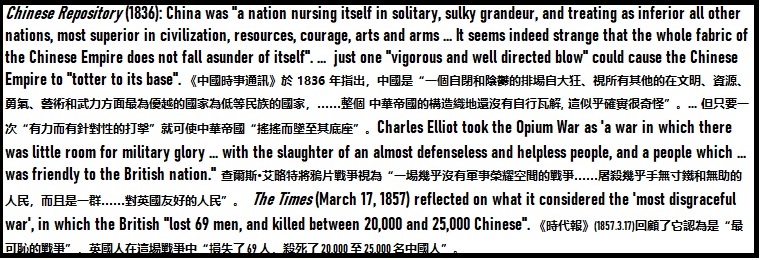
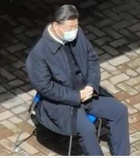








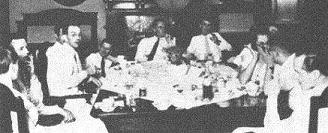
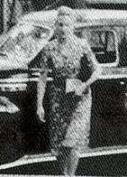
![Though, Anna Wang [Anneliese Martens], in her memoirs, expressed jealousy over Gong Peng by stating that the Anglo-American reporters had flattered the Chinese communists and the communist movement as a result of being entranced with the goldfish-eye'ed personal assistant of Zhou Enlai](GongPeng.jpg)








 Though, 4-5000 years ago, Lord Yu tamed the Yellow River from the point of 'ji-shi', at the Northern Yellow River Bend, and not further than that or beyond that, not anywhere close to some sensational geologist' claim of a latter-day appropriated 'ji-shi' location in the Yellow River Nine Winding area, where a purported earthquake-induced dam first intercepted the water and then collapsed to cause the epic flood.
Tang Dynasty established the Jishi-jun [piled-up stones] military garrison district at Jingbian, Shenxi in commemoration of Lord Yu's feats.
You could say you heard about it right here.
This webmaster had settled on the 'ji-shi' location after correctly reading and analyzing the Chinese classics back and forth for twenty years.
Though, 4-5000 years ago, Lord Yu tamed the Yellow River from the point of 'ji-shi', at the Northern Yellow River Bend, and not further than that or beyond that, not anywhere close to some sensational geologist' claim of a latter-day appropriated 'ji-shi' location in the Yellow River Nine Winding area, where a purported earthquake-induced dam first intercepted the water and then collapsed to cause the epic flood.
Tang Dynasty established the Jishi-jun [piled-up stones] military garrison district at Jingbian, Shenxi in commemoration of Lord Yu's feats.
You could say you heard about it right here.
This webmaster had settled on the 'ji-shi' location after correctly reading and analyzing the Chinese classics back and forth for twenty years.
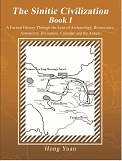
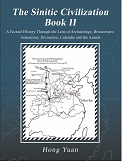

 Seng Ren, in The Western Xia Kingdom & the Pyramids of Orient, claimed that the Mongols continued to allow and encourage the usage of Tangut characters (termed the 'He-xi' characters) throughout the 13th & 14th centuries, and that the Tangut script Buddhism books were carried over to Japan in the same timeframe.
In A.D. 1342, at the Juyongguan Pass, to the northwest of Peking, Yuan Emperor Shundi ordered to erect a six-languages monument, with one Tangut Na-lin [literati] participating in the project.
In A.D. 1372 of Ming Emperor Hongwu's Era, a Tangut-scripted Buddhist article and drawing was authored.
The Tangut characters were still in use during Ming Emperor Hongzhi's Era (A.D. 1488-1505).
Two Tangut script pagodas dating from A.D.1502 were discovered in the Hanzhuang area of the Baoding city of Hebei Province in 1962.
Historian Chen Yinke discovered, in a Tibetan script scroll from a German library, the Tangut scripts dating from Ming's Wanli Era [A.D. 1573-1620] in 1931.
Later, in A.D. 1810, Zhang Shu opened up a monument wall inside of the Dayun-shi Monastery in Wuwei and discovered a 2.5x0.9 meter size monument with the Tangut-Chinese inscription dating from Tangut Emperor Chongzong [Li Qianshu]'s Tianyou Era.
In 1917, some Tangut Buddhism manuscripts were discovered in the Lingwu County.
In 1952 & 1972, at Wuwei of Gansu Province, the Tangut scripts were again discovered, while the Tangut royal tombs [which were ransacked by the Mongols] were excavated on the outskirts of Yinchuan in the same time.
Seng Ren, in The Western Xia Kingdom & the Pyramids of Orient, claimed that the Mongols continued to allow and encourage the usage of Tangut characters (termed the 'He-xi' characters) throughout the 13th & 14th centuries, and that the Tangut script Buddhism books were carried over to Japan in the same timeframe.
In A.D. 1342, at the Juyongguan Pass, to the northwest of Peking, Yuan Emperor Shundi ordered to erect a six-languages monument, with one Tangut Na-lin [literati] participating in the project.
In A.D. 1372 of Ming Emperor Hongwu's Era, a Tangut-scripted Buddhist article and drawing was authored.
The Tangut characters were still in use during Ming Emperor Hongzhi's Era (A.D. 1488-1505).
Two Tangut script pagodas dating from A.D.1502 were discovered in the Hanzhuang area of the Baoding city of Hebei Province in 1962.
Historian Chen Yinke discovered, in a Tibetan script scroll from a German library, the Tangut scripts dating from Ming's Wanli Era [A.D. 1573-1620] in 1931.
Later, in A.D. 1810, Zhang Shu opened up a monument wall inside of the Dayun-shi Monastery in Wuwei and discovered a 2.5x0.9 meter size monument with the Tangut-Chinese inscription dating from Tangut Emperor Chongzong [Li Qianshu]'s Tianyou Era.
In 1917, some Tangut Buddhism manuscripts were discovered in the Lingwu County.
In 1952 & 1972, at Wuwei of Gansu Province, the Tangut scripts were again discovered, while the Tangut royal tombs [which were ransacked by the Mongols] were excavated on the outskirts of Yinchuan in the same time.


 The Tangut records claimed that a minister, by the name of Ye-li-ren-rong, spent years on a high storey building in devising the scripts, for which Li Yuanhao conferred him Marquis Fuping-hou posthumously and Tangut Emperor Renzong conferred him King Guanghui-wang posthumously in A.D. 1162.
In A.D. 1038, Li Yuanhao sent messenger to the Soong court to notify his imperial entitlement as Xia Emperor Jingzong. In his letter, Li Yuanhao claimed Toba (i.e., Xianbei) ancestry and heritage dating from Toba Wei Dynasty.
Among Western Xia territories would be: Xiazhou [Jingbian-xian], Suizhou [Suide of Shenxi], Yinzhou [Mizhi-xian of Shenxi], Youzhou [east of Jingbian-xian of Shenxi], Jingzhou [Mizhi-xian of Shenxi], Lingzhou [Lingwu], Ganzhou [Zhangye of Gansu], Xingzhou [Yinchuan], Liangzhou [Wuwei of Gansu], Guazhou [east of Gansu-xian/Anxi-xian of Gansu], Shazhou [Dunhuang of Gansu], Suzhou [Jiuquan of Gansu], Lanzhou [Lanzhou, surrendered by Tibetans in A.D. 1126], Linzhou [Shenmu-xian of Shenxi, ceded by Soong in 1126], Fuzhou [Fugu-xian of Shenxi], and Fengzhou [east of Hetao in Inner Mongolia] and etc.
The Tangut records claimed that a minister, by the name of Ye-li-ren-rong, spent years on a high storey building in devising the scripts, for which Li Yuanhao conferred him Marquis Fuping-hou posthumously and Tangut Emperor Renzong conferred him King Guanghui-wang posthumously in A.D. 1162.
In A.D. 1038, Li Yuanhao sent messenger to the Soong court to notify his imperial entitlement as Xia Emperor Jingzong. In his letter, Li Yuanhao claimed Toba (i.e., Xianbei) ancestry and heritage dating from Toba Wei Dynasty.
Among Western Xia territories would be: Xiazhou [Jingbian-xian], Suizhou [Suide of Shenxi], Yinzhou [Mizhi-xian of Shenxi], Youzhou [east of Jingbian-xian of Shenxi], Jingzhou [Mizhi-xian of Shenxi], Lingzhou [Lingwu], Ganzhou [Zhangye of Gansu], Xingzhou [Yinchuan], Liangzhou [Wuwei of Gansu], Guazhou [east of Gansu-xian/Anxi-xian of Gansu], Shazhou [Dunhuang of Gansu], Suzhou [Jiuquan of Gansu], Lanzhou [Lanzhou, surrendered by Tibetans in A.D. 1126], Linzhou [Shenmu-xian of Shenxi, ceded by Soong in 1126], Fuzhou [Fugu-xian of Shenxi], and Fengzhou [east of Hetao in Inner Mongolia] and etc.
